Affiliate disclosure: This post may contain affiliate links. Please see our Privacy Policy.
Planting a fruit tree the right way sets you up for success years down the road. Plan ahead and you’ll be rewarded for your efforts.
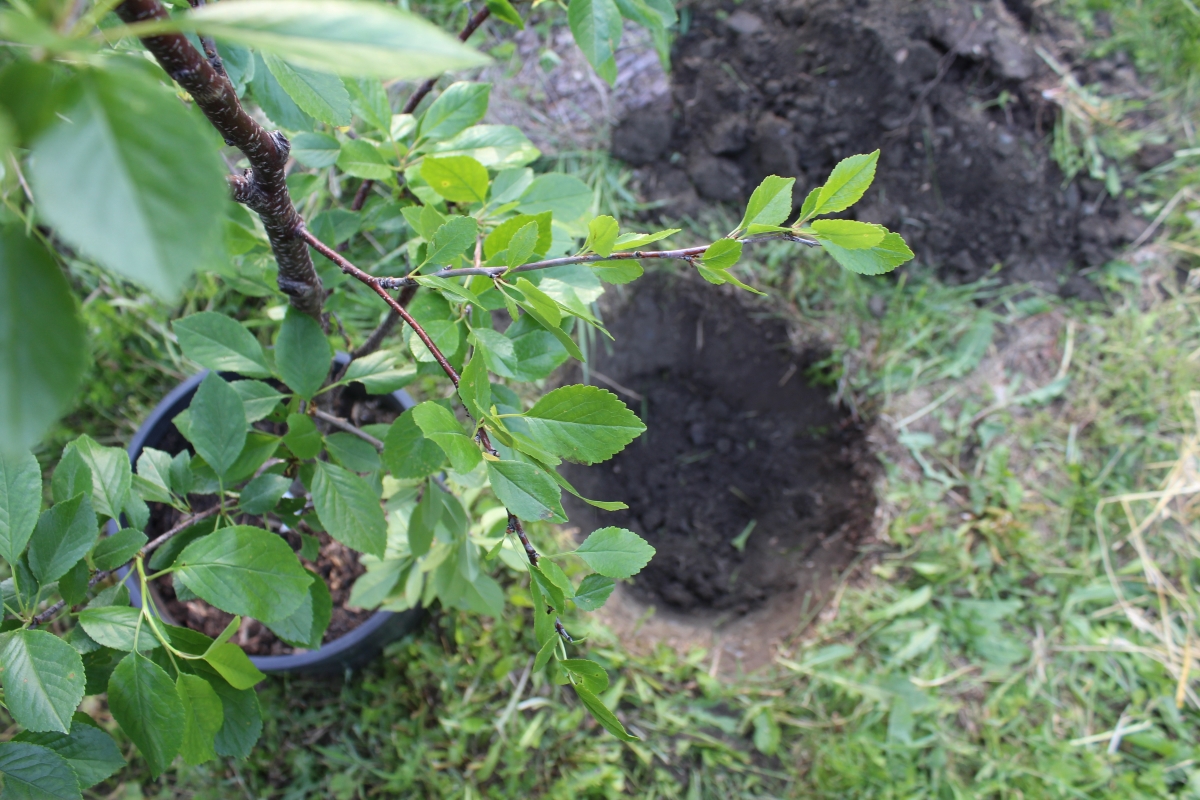
There’s an old proverb that says: “The best time to plant a tree was 20 years ago. The second best time is now.”
You can’t go back in time, but you can plant a fruit tree today that will feed your family for generations. Your future self will thank you, as the sweet juice runs down your chin.
The problem is, unless a tree is planted properly, it won’t be much good 20 years from now. Improperly planted fruit trees can be stunted, or die altogether.
If you’re going to plant a fruit tree as an investment in your land (and your future happiness), you might as well do it right.
The Best Time to Plant a Tree
Proverbs aside, there actually is a best time of year to plant a tree.
You can plant trees at any time of the year, but the best time to plant a tree is in the spring when the ground is workable. The more time between planting your tree and summer, the better it is for your tree. High temperatures in the summer are stressful for new, unestablished trees.
For some climates without hard frosts, planting in the fall works the best. When planted in the early autumn, a tree still has plenty of time to establish its roots and hunker down for the winter ahead, without the stress of summer heat.
Whether planted in the spring or fall, a young tree needs time to establish its roots, making it easier to find water and nutrients, before the stress of either a hot summer or cold winter.
We’re planting this cherry tree in Vermont in May, which is still months before the summer heat in July and August. (Our last frost isn’t until the first week of June.) In warmer climates, you’ll need to start a bit earlier, ideally as soon as the ground can be worked.
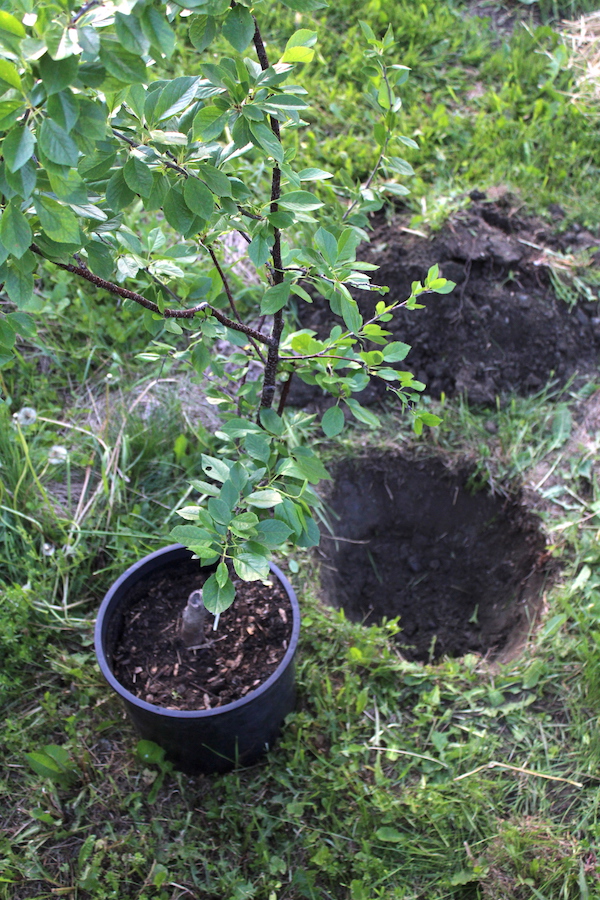
How to Pick the Best Site for a Tree
The best site to plant a tree depends on what type of tree you want to grow. Some fruit trees handle growing in the part shade well (like plums and quince), but most fruit trees need a minimum of eight hours of sunlight daily to fruit. Make sure to read the requirements for each tree that you want to grow before planting.
Aside from sunlight, trees also need well-drained soil. Standing water and saturated ground increase the risk of root rot, which will kill trees. Once your tree has root rot, there is nothing you can do to save it. Apple trees are especially intolerant of “wet feet” which is especially challenging since we have wet soils and a high water table.
The soil should have a pH range from 6.0 to 7.5, but research each type of tree before planting to find the proper pH range for each one. You should test your soil before planting to find out where it is to avoid amending when unnecessary.
Make sure you think about ten years from now and if this tree will work where you want to plant it. Think about power lines, sewers, sidewalks, gas lines, and anything else that a full-size tree might interfere with.
Bare Root vs. Container Grown Trees
When you decide to plant a tree, you’ll find two different buying options: bare root and container grown trees. There are pros and cons to each. Here’s what you need to know.
Bare-root trees are the most economical option, sometimes half the price of container-grown trees. You can find a massive selection of fruit, nuts, and ornamental trees. Most nurseries sell them from the late winter into spring for early spring planting, and they’re easy to shop long distances without their heavy soil.
The problem with bare root trees is that you have to plant them early before they break dormancy. As soon as they start to grow they’ll die without soil, moisture, and nutrients.
Container-grown trees typically are available later in the spring, so they might not be as established when the hot temperatures of the spring appear. They’re more expensive, and not all trees are available in containers.
How to Plant a Tree (in 10 Easy Steps)
Ready to plant your tree? Here’s everything you need to know in 10 easy steps.
How to Prepare a Hole for Trees
The first step once you have your site picked is to prepare a hole for your tree. The hole needs to be 2 to 3 times wider than the current root ball, but make sure it’s not deeper than the current pot holding the tree. You never plant a tree deeper than it was in the container.
Why? Most fruit trees are grafted, and the graft needs to remain above the soil line.
The rootstock on a grafted fruit tree is a different variety than the fruiting tree above the graft. Rootstock is selected for hardiness, early bearing and also helps to control tree size. If you put soil above the graft line, the top of the tree will make roots to put into the soil on its own, and negate all the benefits of the special rootstock.
So, you need a wide but not too deep of a hole to plant your tree. This recommendation works for all trees, regardless of the type. Believe it or not, planting too deep is the most common reason why trees die.
Loosen the sidewalls of the holes by slashing the walls with a spade or shovel.
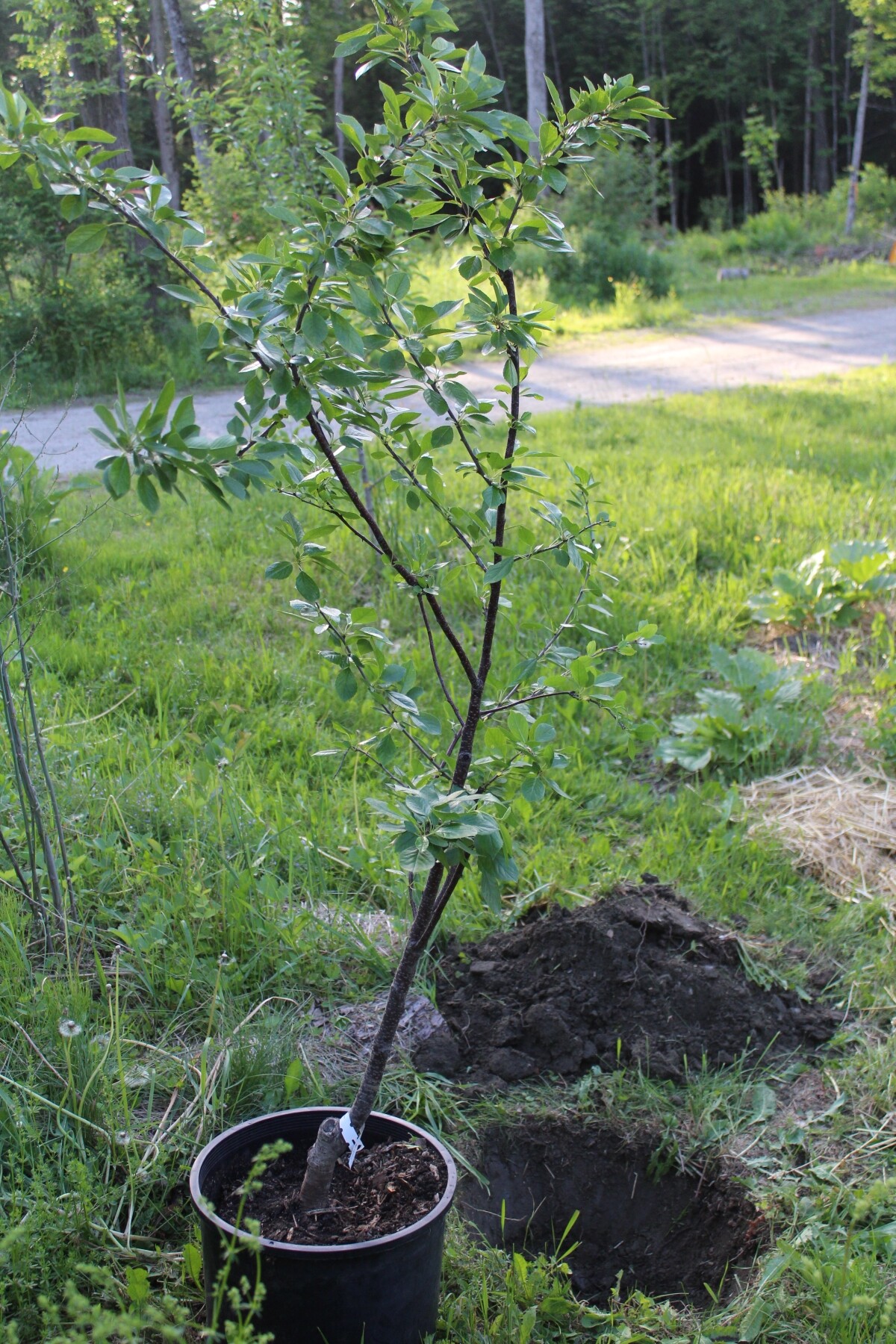
Soak Bare Root Trees
If you’re planting bare-root trees, the roots need to soak in a bucket of water in a shady location for one to two hours before planting. At this time, trim off any damaged roots.
Never allow the bare roots to soak more than several hours. Two hours should be the most you let them soak in water.
That’s just enough to rehydrate their tissues, but not long enough to drown the roots. (Yes, roots can drown, trees need air to their roots just like humans need air to breathe.)
Amend the Soil as Needed
You have to break up the clumps in the existing soil, remove rocks, and make sure you created a suitable environment for your tree.
It was once common to amend the backfill soil with amendments like compost, peat moss, and other ingredients, but now, the advice is different. The best practice when planting trees is to leave backfill unaltered because it encourages the roots to spread out into the native soil rather than staying in the hole.
If you do add compost, dig a bit deeper and put it at the bottom of the hole to encourage the roots to go down into the soil.
The one thing you really need to put into the soil during planting is mineral nutrients because some nutrients aren’t mobile in the soil. One prime example is phosphorus, which is immobile in the soil. That means it won’t help to add phosphorus to the top of the soil later, it needs to be down in the root layer.
Other micronutrients like copper, iron and zinc aren’t mobile either. Our local nursery sells a tree planting mineral mix that contains slow-release minerals that will ensure the tree has micro-nutrients for a lifetime.
If you can’t find anything similar, I’d suggest adding azomite (rich with micronutrients) and rock phosphate (for slow-release phosphorus).
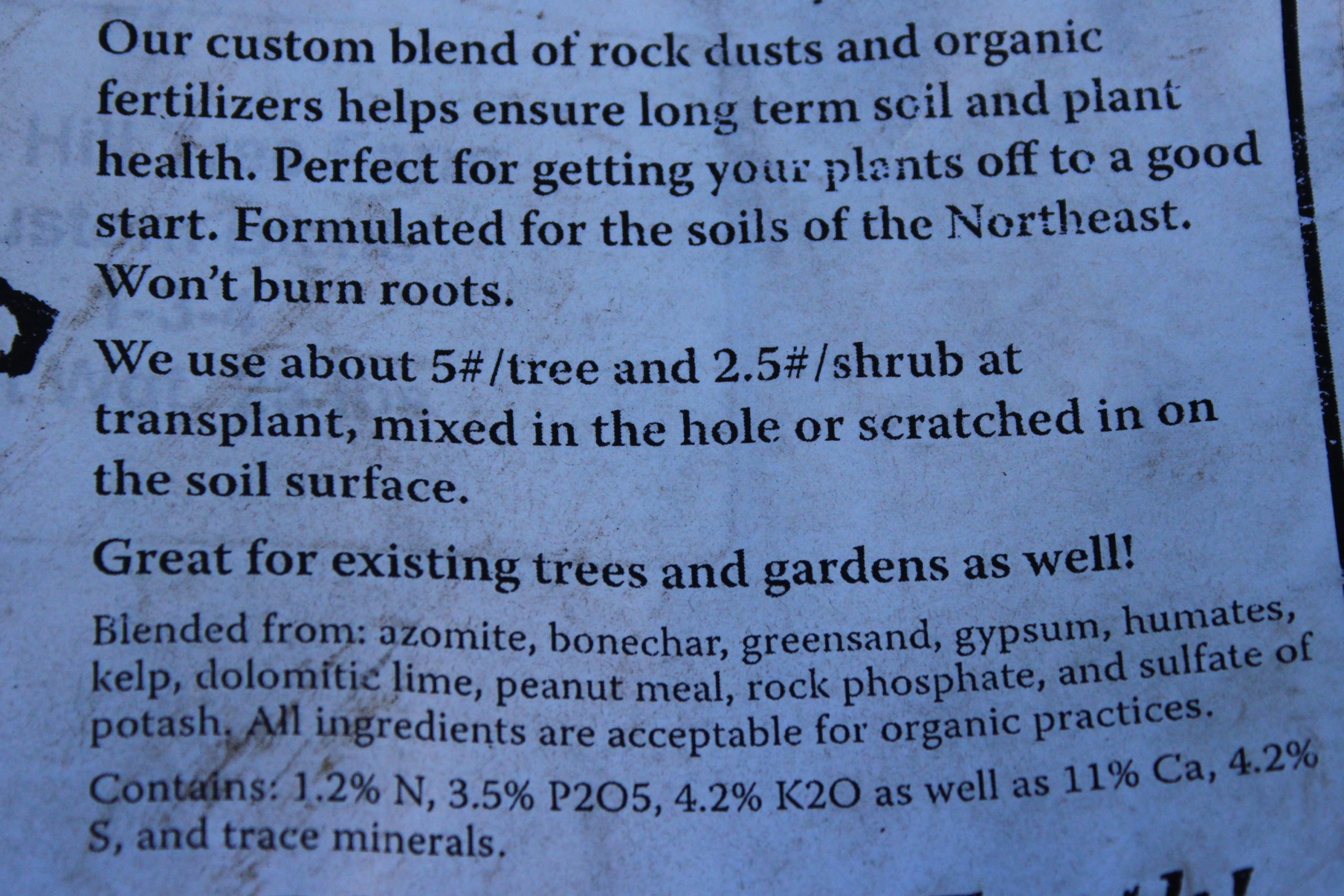
Note that the nutrients added here are VERY slow-release, and they’re all minerals. Don’t add nitrogen fertilizer when planting a tree. Nitrogen encourages fast leafy growth, at the expense of sturdy woody growth. Too much nitrogen during planting can actually kill your tree, or make it weaker.
Later on in life, too much nitrogen will prevent fruiting too (as the tree focuses on leaf growth at the expense of fruit).
Nitrogen fertilizer (and nitrogen-heavy composts) are great for annual gardens and greens, but avoid them when planting fruit trees.
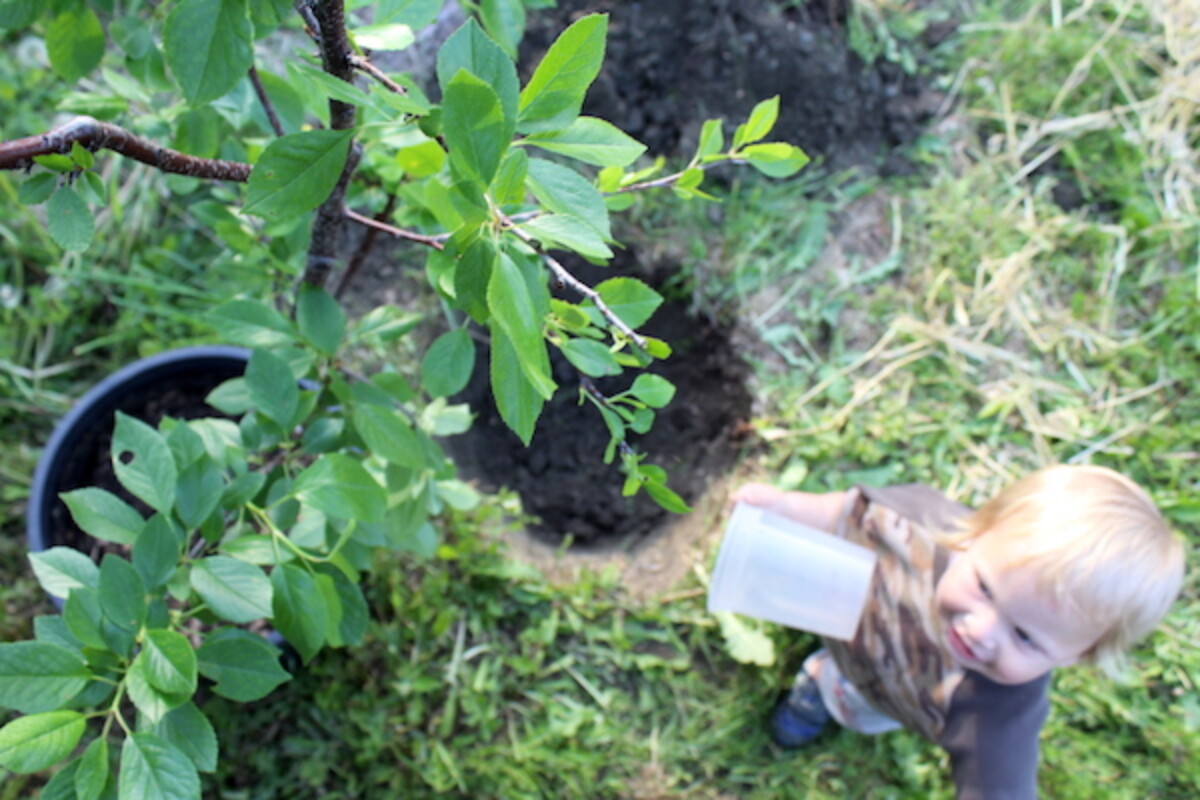
Make Sure to Inspect the Roots
Don’t rush planting your tree. When you remove it from the container, always take a close look at the roots. Sometimes, you’ll find that the roots are bound in a circular pattern or growing in the container’s shape.
It’s best to break up the roots; you don’t want to place a rootbound plant directly into the soil as-is. That will cause your tree to die because the roots will continue to grow in that shape or pattern.
Gently pulling the roots apart won’t hurt or kill them. Even if you cut away some of the roots, the tree will still live, but it won’t survive being rootbound in the ground.
Plant High
Look for the flare of the trunk near the soil level. Sometimes, garden nurseries bury the tree too deep in the container, so you might have to remove some soil to find the trunk flare.
One good recommendation is to place the tree with up to 25% of the root ball higher than the surrounding soil level. Then, use the existing soil to cover all of the roots. This helps water run away rather than collecting around the trunk of your tree, which leads to severe problems. (Namely, rot at the base of the trunk.)
Planting high also helps ensure that you can mulch the tree properly without covering the graft.
Fill the Hole
After your tree is in the hole and the roots are spread apart, fill the hole in with the remaining soil and use your hand to gently pack the soil around the roots to give proper root-to-soil contact.
While gardeners work hard to keep soils fluffy in veggie gardens, you want just the opposite when planting a fruit tree. If there are big air pockets around the roots the tree can dry out, so be sure to tamp the soil down well to encourage root-to-soil contact below ground.
You also should add plenty of water at this time to help eliminate air pockets and establish the roots in the soil.
Mulch Around Your Tree
Mulching around your tree immediately is essential. Don’t put mulch right up against the trunk, leave at least 2 inches of bare soil to ensure that the mulch doesn’t come into contact with the trunk. Mulch is decomposing and can cause the bark to rot when it’s in direct contact.
For the first 2 inches against the trunk, some orchards intentionally “mulch” with gravel to help prevent weeds but also keep the bark or wood chip mulch from coming into contact with the tree itself.
For the rest of the drip line and root zone, add about two inches of organic mulch, like shredded leaves or wood chips. For new trees, this mulch should spread about 2 feet in all directions around the trunk. If you have a drip irrigation system under your tree, it should cover all of it.
Mulching around a tree is important because it helps retain moisture in the soil; trees need plenty of water to help the roots establish. Mulch also helps keep the roots cooler in the summer, something that matters for new trees.
Lastly, and this is a bit deeper into soil ecology, but mulching helps change the dominant soil ecosystem. In annual gardens and lawns, the soil is bacterially dominated and it helps to encourage annual growth at the expense of perennials like trees and shrubs. For trees, we want to encourage “fungal dominance” by adding woody mulch and leaves to feed the mycelial growth of symbiotic mycorrhizae, mushrooms, and fungal organisms that benefit perennials like trees.
Stake When Necessary
Staking trees at planting time isn’t always a necessity. You can ask the garden nursery where you purchased the tree if they recommend staking.
Staking depends on how stable the root ball, the trunk size, how much wind the area receives, and the overall strength of the newly planted tree.
Some trees need to be staked for the first two to four years until the trunk can support itself. This is particularly true if you plant your tree somewhere prone to heavy winds. The support needs to be secured to the tree with ties made from a soft material like nylon stockings.
Dwarfing rootstock isn’t as vigorous as larger rootstock varieties, and those threes almost always need staking. Full-sized trees may need staking initially, but they should support themselves after a few years (if they don’t right from the start).
Protect Your Tree
Young trees are snacks for deer, rabbits, and other critters. If they eat the bark, your tree might die because the wounds are the perfect entrance for bacteria and other diseases.
One way to protect your young tree is by wrapping chicken wire or other fencing around the tree to keep animals away. If deer are common in your backyard, a taller fence is needed; rabbits only need a fence that’s two feet tall.
In our area, we protect the base of each tree from winter mice damage. When there’s deep, persistent snow cover the owls and other predators can’t keep their numbers in check and they can girdle a fruit tree quickly. We use a circle of hardware cloth around the bottom 2 feet of each tree (the snow gets pretty deep here…).
Water Well Until Established
Watering after planting your tree is the most important job you have. It takes weeks or months for trees to become properly established, and watering is a crucial component.
Deep and slow irrigation is critical, which is why using a drip irrigation system is handy. The soil around the roots needs time to saturate and absorb the moisture without too much runoff.
Plan to water your new tree daily for the first month, and gradually decrease the watering until you water once a week. This is normal for the first several months after planting a tree.
Once the roots are established, trees only need watering in areas that don’t get at least an inch of rain a week.
How Long Do Trees Take to Bear Fruit?
Now the million-dollar question….how long until my tree bears fruit?
That depends on a lot of factors, but mainly the type of fruit, tree variety, and rootstock will determine the age at first fruit.
Stone fruits like plum, peach, and cherry tend to bear earlier. Our tart cherries bore a good crop just the next year after planting and had full crops (literal buckets of fruit) at 3-4 years after planting.
This handful of pie cherries came off that tree the very next year.
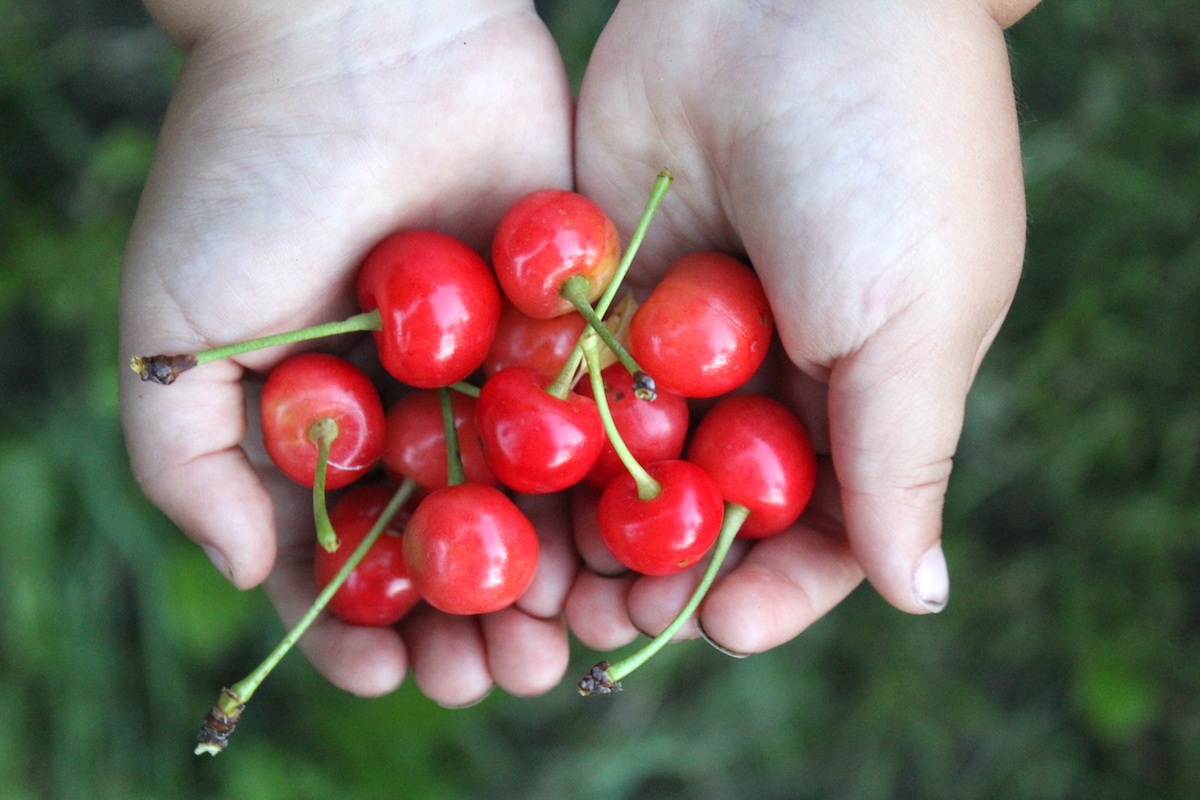
Apple and pear trees tend to take longer, and full-sized apple trees generally don’t bear fruit for 8 to 10 years. Dwarf and semi-dwarf rootstock will cut the wait time, and those trees can bear as early as 4 to 6 years after planting (depending on the rootstock). The exceptionally small dwarf trees often bare in 3 to 4 years.
Lastly, the variety will also impact when the tree starts to bear fruit. Some apple tree varieties are known to be early bearers, and nursery tags and descriptions will label these as “precocious.” Honeycrisp, for example, is known to be very precocious or early bearing, while Northern Spy is known to bear late in life, taking longer for first fruit.
Tree Growing Guides
Looking for more fruit tree guides?
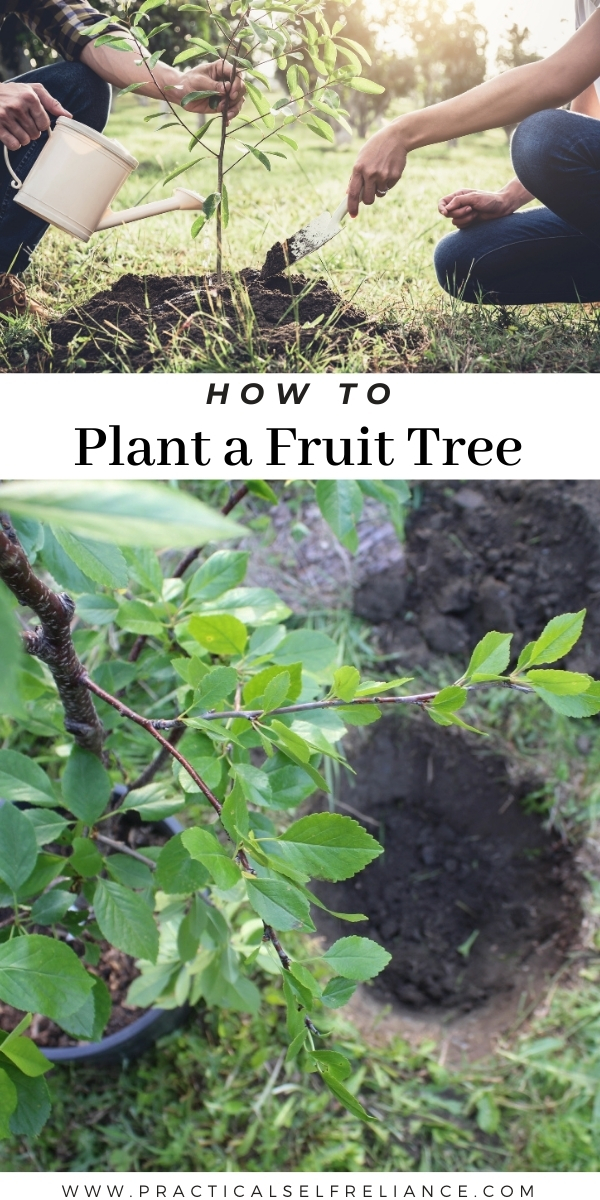














Thank you for this detailed article. I have been searching for planting instructions for stone fruit, apples and citrus trees. Then I saw an article on freezing fruits . Great site, I booked marked it!!
Thank you! So glad it was helpful to you =)